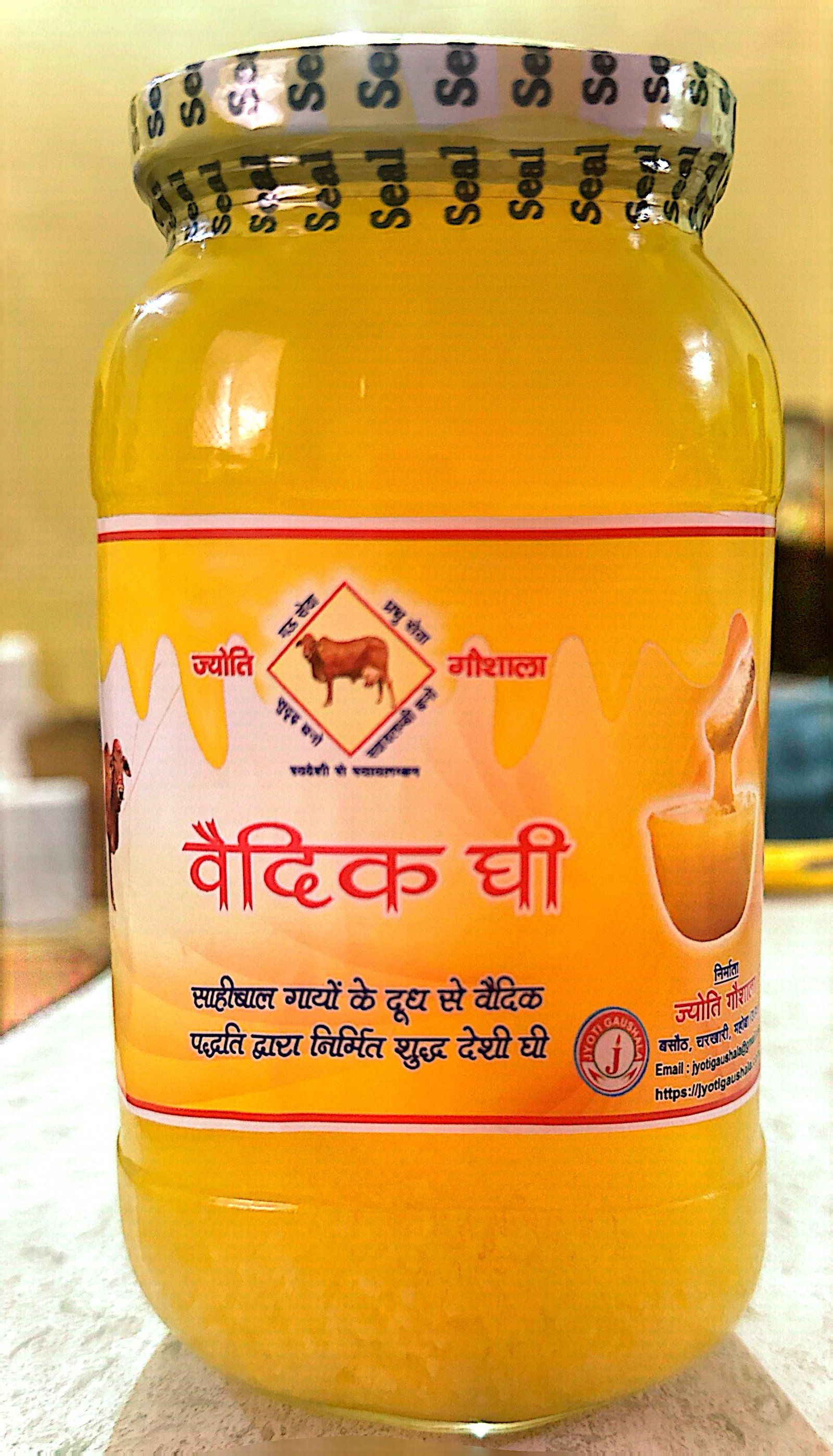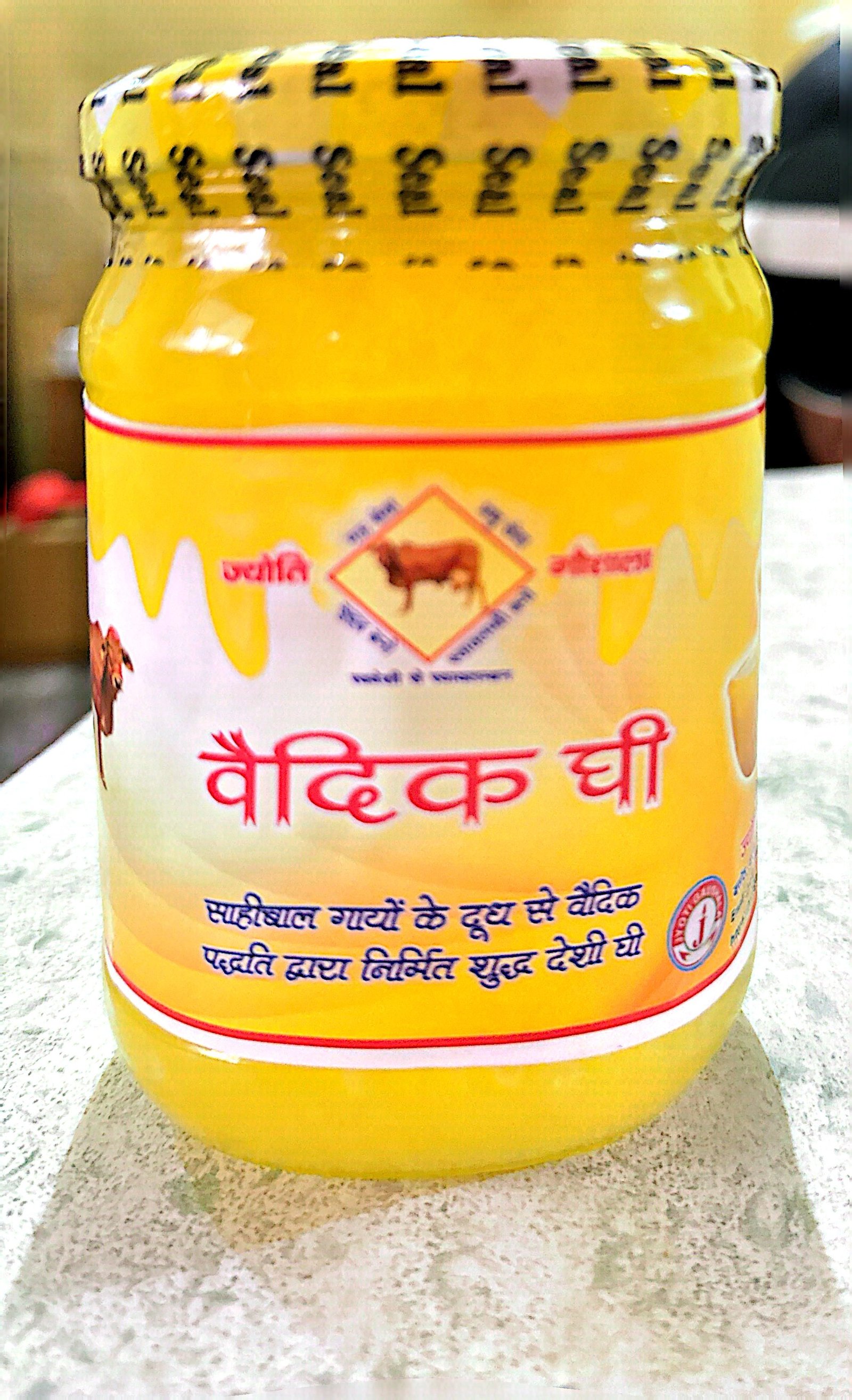The process of making Vedic ghee, also known as clarified butter
The process of making Vedic ghee, also known as clarified butter, follows ancient traditional methods described in Vedic texts. This process is considered sacred and is done with mindfulness, as it is believed to retain the pure essence of the butter, while also preserving its nutritional and medicinal qualities. Here is an overview of how Vedic ghee is traditionally made:
1. Selection of Milk
- Traditionally, Vedic ghee is made from cow’s milk, especially from grass-fed, desi (indigenous) cows. These cows are considered to produce the highest quality milk in terms of both nutrition and spiritual significance.
- The milk should be fresh and preferably organic, avoiding any preservatives or chemicals.
2. Preparing the Curd (Yogurt)
- The fresh milk is first boiled to remove any impurities and then allowed to cool slightly. It is then cultured with a small amount of yogurt or natural starter to turn the milk into curd.
- The curd is left to ferment and solidify at room temperature, which generally takes around 8-12 hours.
3. Churning the Curd to Make Butter
- Once the curd has set, it is churned manually using a traditional churner (called "matka" or "churni"). This process separates the butterfat from the buttermilk. Churning is done by hand in many traditional practices, which is considered an important aspect of the ritual.
- The buttermilk (the liquid portion) is drained off, and what remains is the solidified butter.
4. Heating the Butter
- The collected butter is then placed in a pan and gently heated. The heat should be moderate, as the goal is to remove all the water content while preserving the nutritional properties of the fat.
- As the butter heats, it begins to melt and bubble. The process of heating continues until all the moisture evaporates and the milk solids settle at the bottom of the pan. This is the stage where clarification happens.
5. Straining the Ghee
- Once the ghee has fully clarified (the milk solids turn brown and sink), it is removed from the heat.
- The liquid ghee is then strained through a fine cloth or a sieve to remove any remaining milk solids. This ensures that the ghee is clear and pure.
- The brown residue left in the pan can be discarded or used as a food or flavoring in some traditions.
6. Cooling and Storing
- The clarified ghee is allowed to cool to room temperature. Once it solidifies, it can be stored in an airtight container, preferably a glass jar.
- Traditionally, the ghee is stored in an earthen jar, which is believed to maintain its purity and potency.
Special Considerations in the Vedic Process:
- Mantras and Intentions: In Vedic traditions, it is believed that chanting mantras while making ghee infuses it with positive energy and sacred vibrations. The entire process is performed with devotion and a positive, pure mindset.
- Purity: Every step of the process is done with the utmost care to maintain purity, from selecting the milk to churning the butter and making the ghee. In many Vedic practices, it is considered important to maintain both physical and spiritual cleanliness during the preparation of ghee.
- Fire (Agni): In Vedic rituals, fire (Agni) is considered a purifier. The ghee-making process involves heating the butter over a flame, aligning with the symbolic importance of Agni in purification and transformation.
Benefits of Vedic Ghee:
- Vedic ghee is considered highly nutritious and is believed to have numerous health benefits, such as improving digestion, nourishing tissues, and balancing the body’s doshas in Ayurvedic medicine.
- It is used in cooking, Ayurvedic treatments, and religious rituals, where it is offered as a sacred offering to deities.
Making Vedic ghee is as much a spiritual practice as it is a culinary one, and each step is infused with mindfulness and care.

